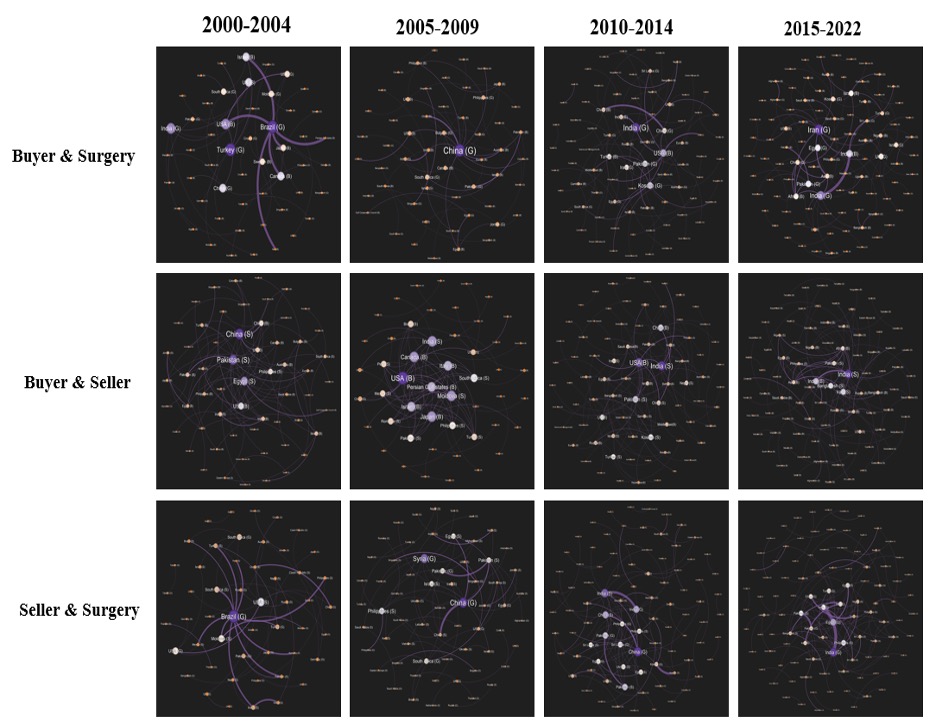Author Information1
Feng, A.2; Kovacs, V.3.; Lee, C.4; Peng, K.5; Sajjad, A.6; Yeum, D.3.
(Editor: Wang, Z.F.7)
1 All authors are listed in alphabetical order.
2 Green Hope High School, NC, 3 Thomas Jefferson High School for Science & Technology, VA, 4 Los Alamitos High School, CA, 5 Oakwood School, CA, 6 St. Paul VI Catholic High School, VA
7 George Mason University, VA
Background: Over the past few decades, international health authorities and law enforcement agencies have taken substantial initiatives to counteract the illicit practice of organ trade. These endeavors reflect a collective commitment to address the pressing issue of organ trafficking, which preys on vulnerable individuals and undermines ethical medical practices. In the 1980s and onwards, the World Health Organization (WHO) has been instrumental in formulating guidelines for human organ transplantation, emphasizing the importance of voluntary donations, transparency, and ethical sourcing [1]. Notably, INTERPOL launched Operation Organs in 2016, targeting criminal networks engaged in organ trafficking and emphasizing cross-border cooperation [4]. Despite the concerted efforts to combat the illegal practice of organ trade, instances of such illicit activities persist. The illicit kidney trade remains a complex and multifaceted phenomenon involving various transnational actors, including sellers, buyers, brokers, and surgical facilities [5]. A notable characteristic of this trade is the intricate network that often facilitates the transactions. For instance, affluent buyers typically do not directly engage with financially disadvantaged sellers. Instead, kidneys procured from economically marginalized individuals are often passed through intermediaries, commonly referred to as brokers [5]. Subsequently, medical facilities responsible for the surgical procedures are identified, contacted, and engaged by these buyers. While the complex interrelationships among agents spanning various countries have been acknowledged, there has yet to be a quantitative methodology explored to systematically detect and analyze the structure of these transnational networks engaged in organ trade. Typically, these networks are presented and examined on a case-by-case basis through individual reports, news articles, and various media channels. Given the inherent difficulty in eradicating these illicit transactions and their intricate multi-agent nature, it becomes imperative to explore the underlying network dynamics and establish a robust spatiotemporal database to comprehensively study these operations.
Objective: The study analyzed illegal kidney sales by generating a network of graphs using data of seller, buyer, and surgery countries and observed relationships among seller, buyer, and surgery countries.
Methods: Starting with an established dataset featuring information on kidney sellers’ and buyers’ nationalities, as well as surgery locations, the study entailed an in-depth examination of the kidney policies of each country under consideration. Data organization involved the meticulous arrangement of buyer, seller, surgery, and year information into a separate spreadsheet, ensuring its suitability for importation. The software Gephi was employed for crafting and analyzing network graphs. Specific network graphs were generated by importing data pairs, such as buyer and surgery records spanning particular years, to facilitate a more targeted analysis. Visualizations were optimized through adjustments to node and edge sizes, the removal of year labels to enhance clarity, and the utilization of the Fruchterman Reingold layout to improve the visualization of network connections.
Results: The network displays the count of Nodes and Edges for various years, illustrating both the countries involved and their connections. Additionally, it highlights the network’s diameter by showcasing the shortest path between the most distant nodes. Moreover, the network places emphasis on the central node, representing the most interconnected country, and provides insights into the average number of connections per country.
Figure 1. Network of Buyer, Sell, Surgery Countries

Conclusions: Our findings indicate that countries like the US and UK ranked highest in kidney sales. This suggests that nations with stronger economies tend to engage in more kidney purchases overall. Conversely, countries with weaker economies, such as India, Moldova, and the Philippines, often recorded higher kidney sales. In countries where kidney sales were legal, such as Brazil and China, certain patterns emerged in kidney surgeries. However, these trends shifted following policy changes and legal enforcement.
References
- World Health Organization. (2023). Transplantation. https://www.who.int/health-topics/transplantation#tab=tab_1
- The Transplantation Society. (2008). Declaration of Istanbul on Organ Trafficking and Transplant Tourism. https://www.declarationofistanbul.org/
- United Nations Office on Drugs and Crime. (2023). Global Database on Trafficking in Persons. https://www.unodc.org/human-trafficking/glotip.html
- INTERPOL. (2016). INTERPOL Operation Targeting Organized Crime Networks Behind Human Trafficking and Organ Trade. https://www.interpol.int/en/News-and-Events/News/2016/N2016-122
- 2017 Trafficking in Persons Report. https://www.state.gov/reports/2017-trafficking-in-persons-report
- Devlin, J., Chang, M.W., Lee, K. and Toutanova, K., 2018. Bert: Pre-training of deep bidirectional transformers for language understanding. arXiv preprint arXiv:1810.04805
- Touvron, H., Martin, L., Stone, K., Albert, P., Almahairi, A., Babaei, Y., Bashlykov, N., Batra, S., Bhargava, P., Bhosale, S. and Bikel, D., 2023. Llama 2: Open foundation and fine-tuned chat models. arXiv preprint arXiv:2307.09288.
